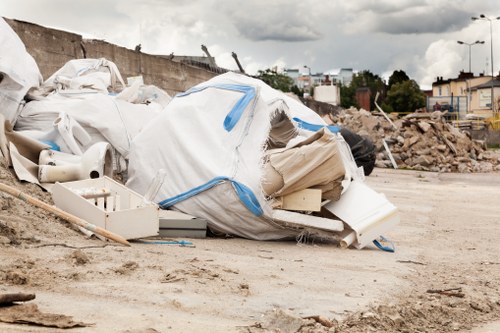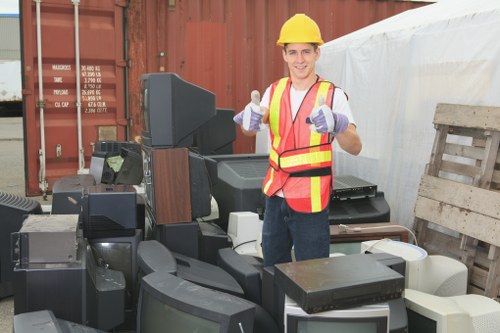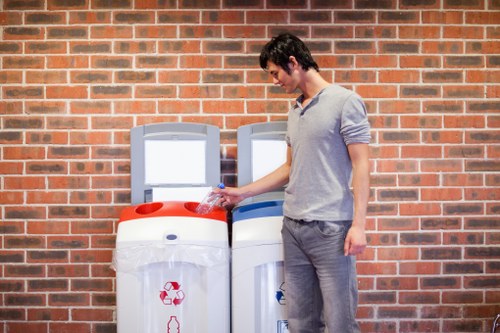Local Community Health and Economic Benefits 
Effective waste clearance in London contributes significantly to community health, economic growth, and overall quality of life. When waste is managed efficiently, urban areas experience fewer pest infestations, lower risks of contamination, and provide a more pleasant environment for residents and visitors. Many studies show a direct correlation between urban cleanliness and lower rates of disease, highlighting the importance of rapid and reliable waste removal services. Investing in waste clearance not only benefits public health directly but also contributes indirectly by bolstering local businesses and community morale.
Local businesses, for example, benefit from a clean and organized city. Better-managed waste disposal translates into improved foot traffic, higher property values, and a stronger local economy as companies are eager to operate in an environment that aligns with modern environmental standards. Moreover, the practice of segregating and recycling waste has spawned new business opportunities and created employment avenues in green technologies, logistics, and urban planning. These business contributions further reinforce how critical effective waste clearance is to the overall socioeconomic fabric of London.
Furthermore, several community partnerships have been formed to enhance waste management, ensuring that every segment of society is engaged in this process. Workshops are held to educate residents on proper waste segregation, while local councils provide financial incentives for those who demonstrate a commitment to reducing waste. This blend of public awareness and economic motivators creates a healthier city and fosters a sense of community responsibility. Through clear policies, innovative technology, and dedicated community initiatives, London continues to set high standards in urban waste management that not only preserve the environment but also enhance the day-to-day lives of its people.
Understanding Services and Technological Innovations 
The services provided by waste clearance companies in London are continuously evolving to keep pace with modern challenges and technological advancements. State-of-the-art vehicles with compaction technology, digital scheduling systems, and real-time tracking have become standard features in modern waste management fleets. These innovations allow for faster and more efficient collection routes, reducing fuel consumption and operational costs. Furthermore, automated sorting systems within recycling centers ensure that waste is processed with precision, minimizing manual labor and human error while maximizing recycling yields.
In addition to these technological strides, customer service and online platforms are increasingly playing a role. Many waste clearance providers now offer easy-to-use websites and mobile apps where customers can schedule pickups, obtain recycling tips, and find out more about local disposal options. The integration of technology with everyday waste management practices has made it possible for Londoners to become more informed and engaged in how waste is processed and repurposed. This technological upgrade not only improves efficiency but also fortifies the connection between public services and the community.
Moreover, the emphasis on continuous improvement is evident throughout the industry. Partnerships between research institutions, technology firms, and local councils are paving the way for even more innovative methods—such as using data analytics to predict waste volumes, which helps in resource allocation and planning. Such forward-thinking efforts underscore the dedication of London’s waste clearance sector to remain at the cutting edge of environmental management. As a result, the city is not only tackling waste more effectively but also setting an inspiring example for other major metropolitan areas around the globe.
Exploring the Areas Closest to London and Their Unique Waste Clearance Needs 
London’s influence extends far beyond its borders, and many surrounding areas have developed unique waste clearance needs and strategies that both complement and challenge the city’s practices. In this section, we take a closer look at 12 nearby areas that maintain a close relationship with London in addressing waste management and environmental sustainability. Each of these places benefits from and contributes to the collective efforts of the region to support clean and green living environments.
Croydon is known for its mixture of modern infrastructure and historic charm. The borough has implemented modern recycling centers and smart urban planning to meet its growing population’s needs. Ealing and Bromley similarly emphasize eco-friendly practices, with community-based programs that encourage residents to segregate household waste for recycling. Meanwhile, areas like Richmond and Greenwich combine their natural landscapes with innovative waste disposal techniques that preserve green spaces and waterways.
Other areas, such as Hackney, Haringey, and Camden, are known for their vibrant cultures and active community involvement. They often lead in public awareness campaigns and local initiatives that promote sustainable waste management. Islington and Kensington not only focus on cleanliness but also on incorporating recycling education into schools and local community centers. Lastly, boroughs like Lambeth and Westminster are developing high-tech solutions to meet complex urban challenges, setting excellent examples of how modern technology can be used to enhance traditional practices. Each of these nearby regions plays a vital role in the broader ecosystem of waste clearance, ensuring that the entire region remains clean, safe, and sustainable.
Frequently Asked Questions
What exactly does waste clearance in London involve?
Waste clearance in London includes the collection, transport, sorting, recycling, and disposal of various types of waste. This process is managed by local councils and private companies to ensure that waste is handled safely and sustainably. The services cover residential, commercial, and industrial waste, ensuring a clean urban environment.
How do recycling initiatives contribute to waste clearance?
Recycling initiatives help reduce the amount of waste that ends up in landfills by reprocessing materials like plastic, paper, and metal. By separating recyclable items from general waste, London can reduce environmental impacts, conserve resources, and promote a circular economy that benefits the city and its residents.
Are there any eco-friendly waste disposal options available?
Yes, many waste clearance providers in London now offer eco-friendly options that include advanced recycling, waste-to-energy conversion, and the use of renewable energy at processing facilities. These practices minimize environmental impacts and help transition the city towards more sustainable waste management methods.
What role do local communities play in waste management?
Communities are vital in waste management efforts. Local residents and businesses contribute by properly segregating waste, participating in local recycling programs, and supporting public education campaigns. This community involvement is essential for creating effective and sustainable waste clearance solutions.
How does the proximity of nearby areas influence waste management in London?
Nearby areas often share resources, technologies, and practices with London, which helps create a cohesive and efficient waste management network. The collaboration among regions like Croydon, Bromley, and Kensington ensures that best practices are implemented across borders, benefiting the entire metropolitan area.
